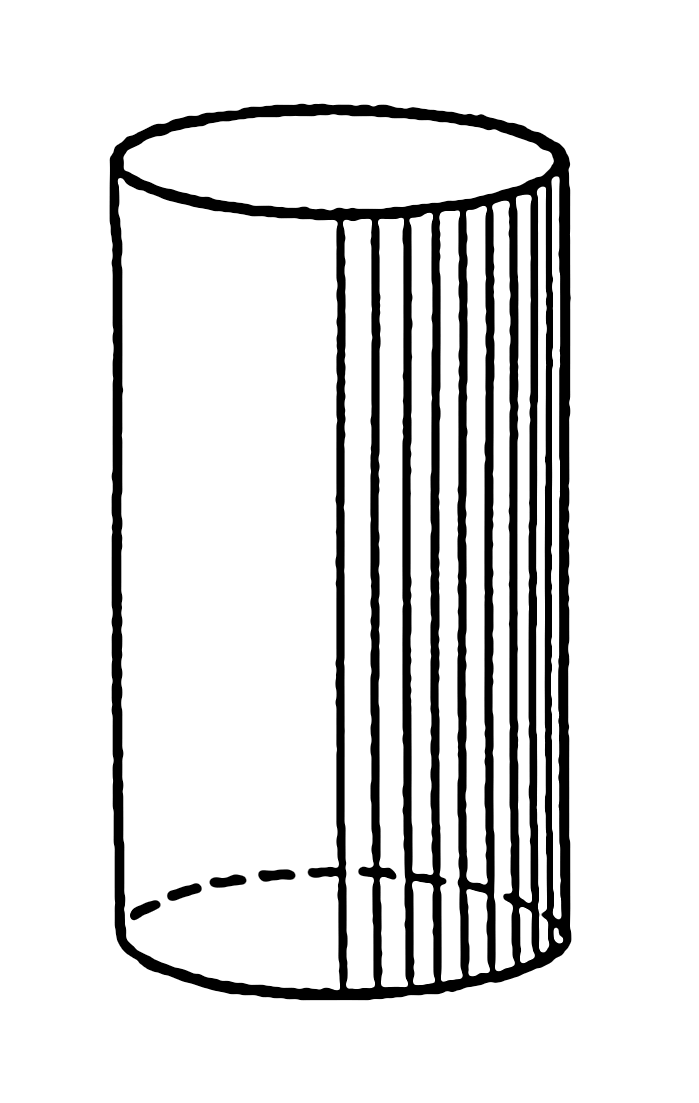All Intermediate Geometry Resources
Example Questions
Example Question #35 : How To Find The Volume Of A Cube
A sphere with a radius of 

Since the cube is bigger, we will be subtracting the volume of the sphere from the volume of the cube.
Start by recalling how to find the volume of a sphere.
Plug in the given radius to find the volume.
Next, recall how to find the volume of a cube:
Plug in the given side length to find the volume of the cube.
Finally, subtract the volume of the sphere from the volume of the cube.
Make sure to round to 
Example Question #36 : How To Find The Volume Of A Cube

The above figure shows a triangular pyramid inscribed inside a cube. The pyramid has volume 100. Give the volume of the cube.
Let 

The volume of a pyramid is one third the product of its height and the area of its base. The height of the pyramid is 
The volume of the cube is 

or, equivalently,
That is, the volume of the cube is six times that of the pyramid, and, since the pyramid has volume 100, the volume of the cube is 
Example Question #1 : Cylinders
A cylinder has a volume of 16 and a radius of 4. What is its height?
Since the radius is 4, the area of the base is 


Example Question #2 : Cylinders
What is the surface area of a cylinder with diameter 4 and height 6? The equation to calculate the surface area of a cylinder is:
If the diameter of the cylinder is 4, the radius is equal to 2. Therefore:
Example Question #71 : Solid Geometry
Find the surface area of the following right cylinder:

The answer is 

Plug in 4 for 

Then to get the area of the round side, you would take the circumference times the height. Thus with the formula

you would get 
To get your final answer, add 


Also you could remember the formula
and plug in 

Example Question #2 : Cylinders
Given a cylinder with radius of 5cm and a height of 10cm, what is the surface area of the entire cylinder?
The surface area of the whole cylinder = (2 * area of circle) + lateral area
Think of the lateral area as the paper label on a can; It wraps around the outside of the can while leaving the top and bottom untouched. The area of the circle, times 2, is to account for the top and the bottom of the cylinder.
Area of a circle =
So the area of the circle = 
Now for the lateral area. Notice how if we have a can with a paper label, we can take the label, cut it, and unroll it from the can. In this way, our label now looks like a rectangle with a
height = height and the
width = circumference of the circle.
Circumference =
So our rectangle is going to have a height of 10 and a width of 10
So the total surface area =
Example Question #3 : Cylinders
The circumference of the base of a cylinder is 

The formula to find the surface area of a cylinder is 


In this kind of equation-based problem, it's helpful to ask "What information do I have?" and "What information is missing that I need?"
The problem provides information for the 

, where


Therefore, the first step for this problem is to solve for 
Because the diameter is 

Now the surface area can be solved for after the 

Example Question #1 : How To Find The Surface Area Of A Cylinder
Find the surface area of the cylinder below.

To find the surface area of the cylinder, first find the areas of the bases:
Next, find the lateral surface area, which is a rectangle:
Add the two together to get the equation to find the surface area of a cylinder:
Plug in the given height and radius to find the surface area.
Make sure to round to 
Example Question #7 : Cylinders
Find the surface area of the given cylinder.

To find the surface area of the cylinder, first find the areas of the bases:
Next, find the lateral surface area, which is a rectangle:
Add the two together to get the equation to find the surface area of a cylinder:
Plug in the given height and radius to find the surface area.
Make sure to round to 
Example Question #8 : Cylinders
Find the surface area of the given cylinder.

To find the surface area of the cylinder, first find the areas of the bases:
Next, find the lateral surface area, which is a rectangle:
Add the two together to get the equation to find the surface area of a cylinder:
Plug in the given height and radius to find the surface area.
Make sure to round to 
Certified Tutor
Certified Tutor
All Intermediate Geometry Resources


























































































